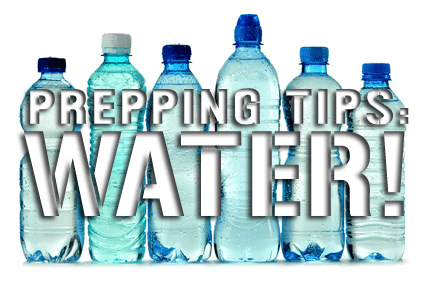Prepping Tips: Water is the Number One Priority!

Many people think of food first regarding family preparedness planning, but water, not food, should be the top priority. After the air we breathe, water is essential to sustaining life. We can last two to four weeks without food but only survive a few days without water.
Whether you are planning for short-term emergencies like a storm that knocks out power for a week or less or longer storage, having enough water should be the first thing to tackle in any preparedness plan. There are three crucial considerations in accumulating and storing an adequate water supply for you and your family:
The essential requirement for each person in your household is a minimum of two quarts of water per day for drinking. In addition to drinking water, you will need water for cooking food, brushing your teeth, or washing your hands. Therefore, the total amount of water required for each person is a minimum of one gallon of water for each household member per day for two weeks. That amount could be even more depending on the temperatures or particular needs of individuals in the household.
Emergency water sources can be found in and around most homes and can be used as a backup source if there is no regular water supply available. These include:
If there is any doubt about the safety or purity of an emergency water source, it should always be treated first before consumption. Even a clear running stream can contain harmful bacteria or parasites and should be treated first. Water can be treated by several methods to make it potable:
Water is the most basic survival necessity and should be the highest priority in a preparedness program. Start today to store an adequate water supply to sustain your family for either long-term home storage or an emergency.
